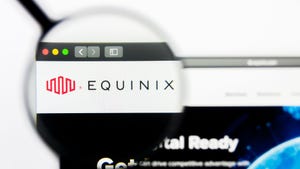
Insight and analysis on the data center space from industry thought leaders.
Tech Refreshes Don't Have to Be Painful
A thoughtfully designed hybrid cloud model can give you the flexibility of the public cloud along with the control, security, cost predictability, and performance of the data center.
September 14, 2023

Your company's IT infrastructure has been in place for several years, and you are starting to experience issues. As these IT systems age, hardware component failures intensify and maintenance costs steadily increase. On top of that, you have performance and compatibility concerns around launching modern applications and data services on these legacy platforms. All of these issues signal that an infrastructure upgrade is near. It feels like you just finished your last tech refresh, and it's already time for another.
While hardware refresh cycles may be lengthening — up to five years on average compared with three in 2015 — regularly updating critical equipment is necessary to optimize IT spending and performance. Research from IDC shows operating costs for servers spike after four years, becoming three times higher than right after replacement.
Relying on legacy equipment not only introduces operational risks but also hinders IT teams that should focus on business innovation. So how can IT leaders streamline the refresh process, reduce costs, and minimize the impact on their teams?
The easy answer might seem to be to move to the cloud. But while the public cloud has its place, it's not ideal for predictable growth, resource-intensive enterprise workloads. With unpredictable egress fees, costs are nearly impossible to forecast. And with the rise of AI workloads, costs may balloon further.
Fortunately, there are tech refresh options beyond large-scale public cloud migrations or major on-premises upgrades. A well-planned hybrid IT strategy can help you assess workloads and determine the best venue based on cost, performance, and security. In many cases, leveraging on-demand infrastructure in a colocation facility provides the flexibility of the public cloud and the control, security, cost predictability, and performance of the data center.
Here are three common challenges to consider when embarking on a tech refresh journey.
Overcoming the High Cost of Server Replacement
For many companies, tech refreshes feel like a vicious cycle — as soon as one finishes, it's time to start the next. Budget constraints are often the main obstacle to infrastructure modernization, along with lack of executive buy-in.
Many IT leaders are turning to bare metal compute-as-a-service offerings delivered via data center providers to avoid the hidden costs and complexity of the public cloud while reducing the need to own and maintain their own hardware. Bare metal solutions range from low-cost commodity computing to enterprise-class offerings for high-performance workloads, delivered via flexible subscriptions.
According to Gartner, mainstream enterprise adoption of bare metal as a service (BMaaS) will happen in 1-3 years, partly due to the desire for cloud-like subscription models. Organizations also benefit from rapid provisioning, predictable pricing, and improved performance, reliability, and security.
Managing Data Migration Obstacles
When shifting workloads during a refresh, managing data migration and compatibility can be complex and costly, often involving moves from old to new platforms.
Partnering with a data center provider keeps data local for higher performance, while typically eliminating egress fees associated with moving data out of public cloud platforms. This approach also enables easier integration with existing systems versus stretching workloads to the public cloud.
Addressing Resource Constraints
Completing a full tech refresh can strain valuable IT personnel and resources. Beyond new hardware costs, teams must traditionally deploy duplicate environments, migrate applications and data, ensure stability, and dismantle old infrastructure.
Some data center providers have developed purpose-built network fabrics that enable customers to easily connect and consume on-demand bare metal, storage, and interconnection services. This capability can greatly simplify the path to technology refresh. These data center fabrics are not prescriptive; rather they allow you to procure the a la carte services required for your technology refresh — including servers, storage, and network interconnectivity — at the click of a button.
With this approach, not only do you benefit from the consumptive economics of an on-demand service, but you also increase efficiency by reducing or eliminating physical server management, network management, and ongoing human intervention. This frees up valuable time for business priorities and innovation.
Some providers also offer comprehensive portals with API-driven architecture for real-time visibility and remote management. These capabilities drive higher service quality, reduce maintenance costs, and accelerate time-to-solution after modernization.
While necessary, tech refreshes don't have to be painful. Solutions like bare metal as a service and key partnerships with data center providers can help you modernize your infrastructure with greater cost predictability and control — allowing you to optimize today's infrastructure while preparing for tomorrow's innovation.
Jim Lipps is Vice President of Sales Engineering at Cyxtera.
About the Author
You May Also Like




.jpg?width=300&auto=webp&quality=80&disable=upscale)


